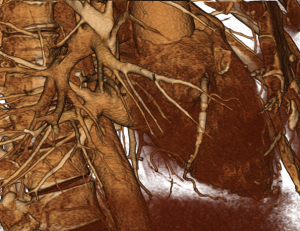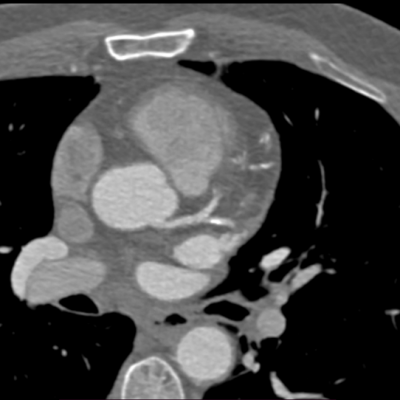3D medical image processing in cardiology
The previous post dealt with the topic of medical image segmentation as a method for preparing neural network learning data. However, the 3D medical image processing cardiovascular models prepared via the segmentation process have much wider applications.
The revolution in 3D medical image processing
Recent years have seen revolutionary changes in the medical world due to technological advancements in 3D printing and artificial intelligence. Undoubtedly, this is welcome and vital news, as it heralds numerous benefits.
Applications of 3D heart modelling and printing
The three-dimensional anatomical models produced by 3D modelling are used primarily in medical education. Among other things, they make it possible to present to pupils and students the full spectrum of malformations and variations.

They also allow specialists to familiarise themselves with the anatomy before performing a procedure – especially in the case of heart defects and to assess vascular anatomy. It shows that 3D medical image processing supports experts in their work.

Example of a 3D Coronary computed tomography angiography render
with a stent on the right coronary artery obtained during the project.
With 3D medical image processing it is possible to perform simulations that use heart models. It allows experts to learn and train without risking the health and lives of patients. It also makes possible to practice different scenarios and perform complex treatments and procedures.
Such simulations are particularly employed when training specialists. The use of 3D printing is also extremely helpful in the case of patients with tumours. The use of different printing materials and colours makes it possible to locate the lesion, its size or vascularisation.
Our experience in 3d medical image processing and segmentation in cardiology
We have been segmenting anatomical areas in cardiology for over 3 years. Creating a ground-truth set to achieve desired results here involves creating a set of several hundred segmentations.
The biggest challenge, apart from the quantity, is the accuracy of created segmentations. From our experience in creating various 3D models and in 3D medical image processing so far, it has been the segmentation of the coronary arteries that we have found most difficult and labour-intensive.
Let’s not make any assumptions before examining all the facts. The following text will mainly focus on the challenges of segmenting coronary arteries. The complicated shape of the vessels and the variety of vessels in patients, especially when anomalies are present, make working with these structures difficult. The vessel’s small diameter poses a challenge to the spatial resolution of the examination, and the image may be blurry and noisy due to heart movements.
So, you will read about how our segmentation process looks like and how we managed to improve it in the next post.

Example of Coronary Computed Tomography Angiography image with motion artifacts and noise.
Summary
Examples of the use of 3D modelling and 3D printing in the cardiovascular field are numerous and could be mentioned almost endlessly (source). Just a few examples of applications have helped to illustrate the enormous possibilities offered by the combination of technology and medicine under the aegis of 3D medical image processing.